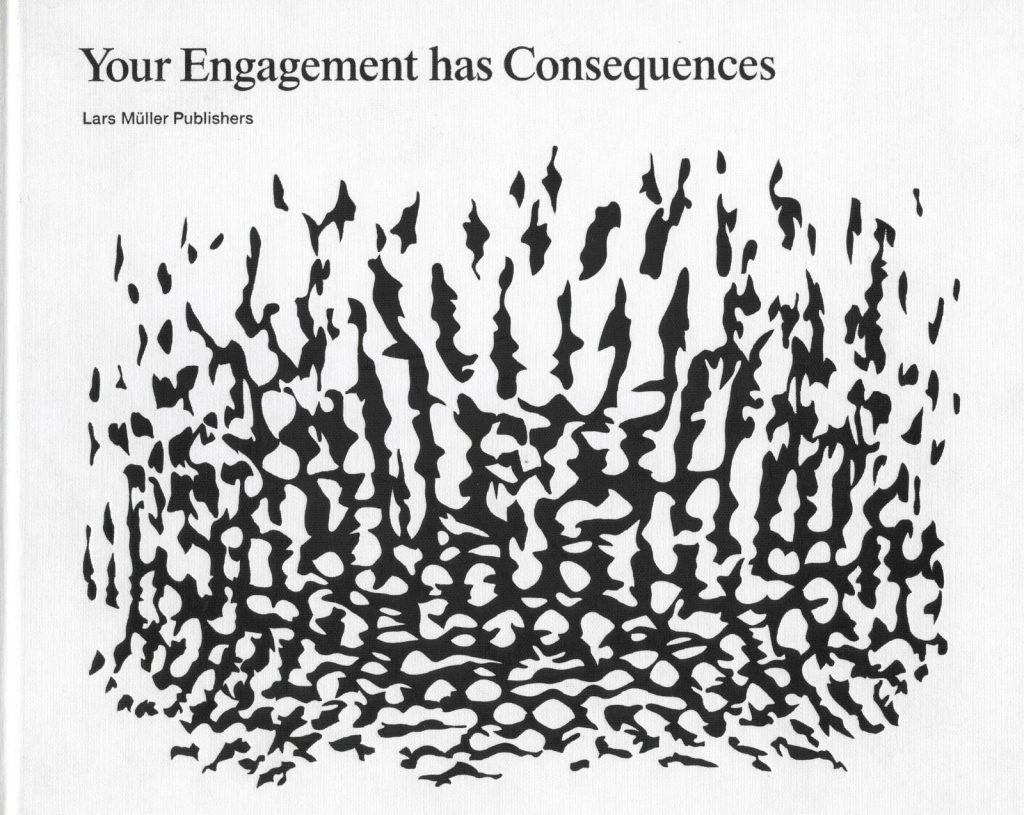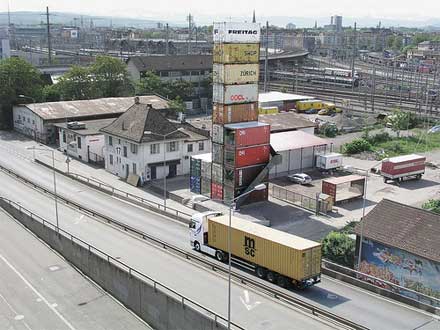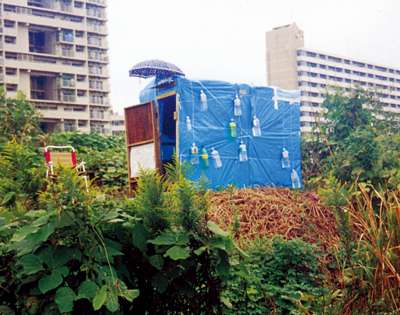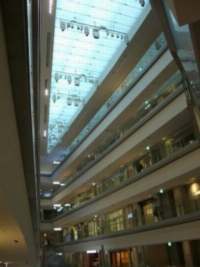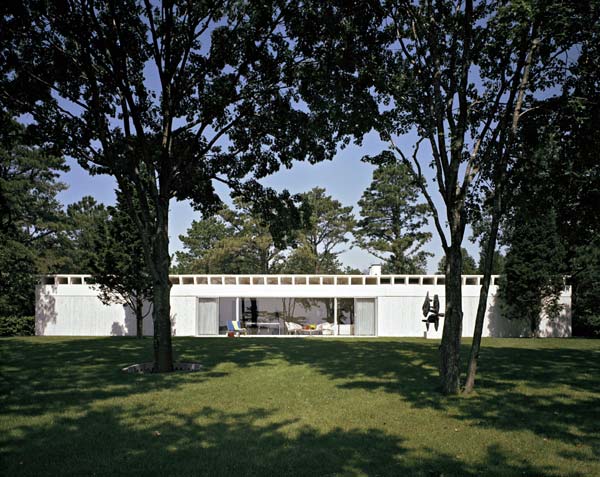
Modernist architect Gordon Bunshaft’s widow willed his exquisite travertine-clad Georgica Pond home–his only domestic design– and their carefully installed collection of modern art to MoMA when he died in 1994.
MoMA sold it to Martha Stewart in 1994 without any restrictions or covenants. Stewart, caught up in the Minimalist revival of the day, hired John Pawson to redo it.
Several years later the house, a gutted shambles on the brink of a poorly conceived expansion and with some of its travertine scavenged for Stewart’s Bedford, NY kitchen, was transferred to Stewart’s daughter Alexis, who put it on the market in 2004.
It sold to retro textile guy Donald Maharam, who disingenuously declared the house an unrestorable ruin and razed it in July.
The culpability compounds with each set of hands that touched this property.
Bunshaft could have put covenants on it before willing it to MoMA, but didn’t, possibly on the assumption that the Museum would, by the nature of its mission, take steps to preserve this important design.
MoMA could have put restrictions on the house when it sold it to Stewart but didn’t. MoMA’s not in the house business, so the idea that MoMA woulda shoulda kept it is naive at best. As is any idea that Bunshaft could’ve intended for MoMA to do anything but benefit from the gift of the house.
But still, the operating principles here were fiduciary, not curatorial or conservationist; and yet the “understanding” with Stewart and the publicity around it at the time, points to a perceived responsibility beyond merely maximizing the museum’s return from a donation. Q: Did the Museum set aside the proceeds from the sale for future acquisitions? “Art-for-art,” as befits a deaccession? I highly doubt it. If not, however the sale was presented–or spun– in the press, on the museum’s ledger, the house was a financial asset, not a work of art.
Stewart could have left the house as is, but didn’t. Can anyone be surprised by that? Martha Stewart is a hack. The queen of hacks. It was her penury and negligence that let the house deteriorate. She’s lucky that an over-inflated sense of your own aesthetic superiority leading to the decimation of a modernist landmark isn’t a crime, or she’d still be in jail.
Ever since the sale, MoMA said it had a “good faith agreement” with Stewart to preserve the house, which was a stripped, weed-covered shell when her lawsuits with the house’s next door neighbor were finally settled.
Pawson’s a frickin’ hack, but he coulda–no, he was just Stewart’s hack.
Alexis… this was a wealth transfer mechanism, nothing more.
Maharam’s a hack, and a spineless hack at that. He could have restored the house if he cared to, instead he hides behind the excuse that it was beyond help. The incremental expense of doing so is approximately zero compared to the price of the land. And it’s not like he can build anything else; wetlands zoning restricts him to Bunshaft’s original footprints (and whatever Stewart/Pawson managed to get approved.)
Did someone mention approvals? That’d be the East Hampton town board who sat by while one of the few interesting feats of architecture in the whole place was modified and destroyed. But then, why should important modernist design get any better treatment in the potato fields of the Hamptons than they do on the corner of Central Park?
In LA, three of Frank Lloyd Wright’s concrete block houses hover on the brink of ruin. Important corporate headquarters–including one of Bunshaft’s–get redeveloped with impunity. Modernist preservation groups like Docomomo whimper to no effect. How many 20th century landmarks must be lost before something changes?
Without any explicit agreements anywhere regarding its preservation, without any laws, zoning, landmark designations or other institutional protections, and in the face of the Hamptons real estate juggernaut, the house was doomed before Mrs. Bunshaft’s assistant ever called Frank Campbell.
I used to sail and kayak on Georgica, often with the express purpose of seeing Bunshaft’s art and the luxurious simplicity of his house. So excuse me if I seem especially pissed and despondent.
Martha’s Touch [nationaltrust.org via archinect]
Also: The Architecture Newspaper’s earlier coverage [archpaper.com, includes pic]
Disrepair At Martha’s [the easthampton star, 2002]
HC&G says MoMA chose Stewart’s bid over her Georgica neighbor, developer Harry Macklowe, on the understanding that she would do righter by the house.
[11/05 update: An earlier version of this post criticized the Preservation article as cribbed from previously published accounts of the Bunshaft house saga. This speculation was prompted by similarities in quotes and by a dangling reference to a “Krinsky,” Bunshaft’s biographer who goes otherwise unmentioned in the Preservation piece. The writer of that piece has since contacted me–presumably because I unfairly called him a hack–and provided further information that shows my purely text-based speculations were incorrect. The Krinsky thing was a copy editing oversight; and guess what, the same people talking about the same thing tend to do it in similar ways, so no surprise if their quotes sound similar.
Anyway, my apologies to the writer, an innocent bystander who got hit when I started flinging all those “hack”s around.]
